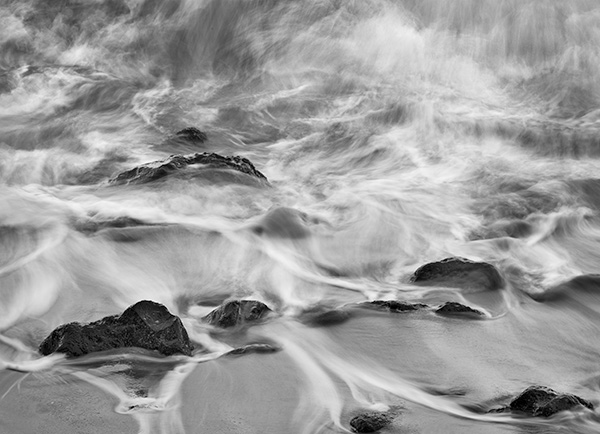In my previous post, I gave an example of previsualization gone wrong, drawn from the rich trove of similar experiences in my photographic history.
Today I’d like to show you what can happen when previsualization takes a back seat to experimentation.
Several years ago, Charles Cramer (his web site is here) got interested in taking pictures of waves. In this project, he made over a thousand medium format digital captures on one weeklong trip to Hawaii, varying location, framing, and shutter speed. To create this image, Charlie found a nice arrangement of rocks, and maintained that position for 20-30 exposures, because, as he says, “Each resulting image (with the exception of the rocks) was completely different! For the series I used exposure times of around 1/2 second, and waited until the wave started to recede. It’s quite a lovely surprise to see each exposure on my camera LCD, as you never quite know how it’s going to look. I felt like the waves were performing for me, assuming different shapes and colors for each exposure.”

Just a thought….in my view, planning to do experimentation is as much visualization as planning to do a specific shot. You always (usually) have an idea what you can get and want to see if what you “visualized” will actually happen…and/or…what conditions are required to get the result you “see”.
BTW…I think per visualization is a redundant word….visualization more than fulfills the thought.
John, you raise two good points. Rather than dealing with them in replies to your comment, I’ll write posts on each. I think they’re both that important.